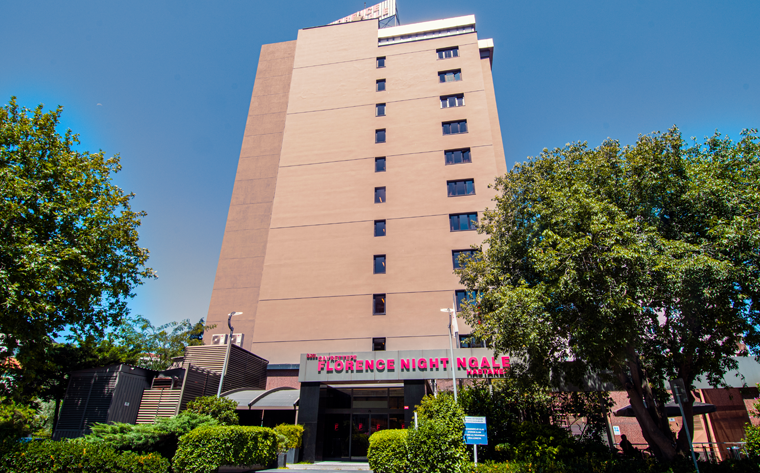
What is a Pain Clinic and Which Diseases Does It Cover?
Pain clinic is a medical unit specialized in the diagnosis and treatment of chronic and acute pain. This clinic covers various types of pain such as headaches, spinal pain, cancer pain and aims to improve the quality of life of patients by adopting a multidisciplinary approach.
About Pain Polyclinic
Pain clinics are medical units specifically established to determine the cause of pain and apply the most appropriate treatment methods. In these clinics, patients are offered personalized treatment plans and modern medical technologies are used.
Who is a Pain Polyclinic Specialist and What Are Their Duties?
A pain clinician is a physician who has received special training and experience in pain management. These specialists are usually trained in medical fields such as anesthesiology and resuscitation, physical medicine and rehabilitation, and neurology, and specialize in pain management. Pain specialists work to diagnose the cause of pain and develop effective treatment methods in order to improve the quality of life of patients.
The duties of the pain clinic specialist are as follows:- Diagnosis of Pain: Conducts a comprehensive medical evaluation to determine the source and type of pain experienced by patients. During this process, information such as the patient's medical history, the severity of the pain, its duration, and the situations in which it increases are taken into account.
- Creating a Treatment Plan: After a diagnosis is made, a personalized treatment plan is created according to the patient's needs. This plan may include various methods such as medication, physical therapy, nerve blocks, and surgical intervention.
- Multidisciplinary Approach: When necessary, a multidisciplinary treatment process is carried out by collaborating with physicians from other specialties. For example, oncologists may work with psychiatrists for cancer pain and situations requiring psychological support.
- Application of Treatment Methods: The pain clinic specialist implements the determined treatment plan and closely monitors the patient's treatment process. During this process, he/she evaluates the patient's response to treatment and makes changes to the treatment plan if necessary.
- Patient Education and Support: Informing and educating patients about methods of coping with pain is another important task of specialists. They provide support in pain management in order to ensure active participation of patients in the treatment process and to improve their quality of life.
- Following New Methods in Pain Management: Pain clinic specialists closely follow the latest methods and technologies used in pain treatment and try to apply them to their patients. In this way, they can offer the most up-to-date and effective treatment options to patients.
Pain clinicians are physicians who play a key role in the treatment of patients with chronic and acute pain. Specializing in pain management, these physicians provide a comprehensive treatment process to improve patients' quality of life and minimize pain.
What are the diseases treated in the Pain Clinic?
In the pain clinic, acute and chronic pains resulting from various causes are treated. The main diseases and conditions treated in these clinics are:
Chronic Headaches- Migraine: A condition characterized by severe, usually one-sided headaches, nausea, and sensitivity to light or sound.
- Tension-Type Headaches: These are pains that usually occur due to stress and are characterized by a feeling of pressure around the head.
- Cluster Headaches: These are headaches that cause intense pain around the eyes and recur periodically.
- Lumbar Disc Herniation: The discs located between the vertebrae in the lumbar region slip out of place, causing nerve compression and pain.
- Cervical Disc Herniation: Nerve compression occurs as a result of a similar disc displacement in the neck area.
- Back Pain: Back pain caused by strain on the spine and surrounding muscles, poor posture or other health problems.
- Diabetic Neuropathy: Pain that develops as a result of nerve damage due to diabetes.
- Trigeminal Neuralgia: A nerve disorder that causes sudden and severe attacks of pain in the face.
- Postherpetic Neuralgia: Chronic pain that develops after shingles and occurs as a result of nerve damage.
- Fibromyalgia: A chronic disease characterized by widespread pain, fatigue and tender points throughout the body.
- Osteoarthritis: A degenerative disease that causes the joint cartilage to wear away and cause pain in the joints.
- Rheumatoid Arthritis: It is an autoimmune disease that causes joint inflammation and can cause pain and joint deformation.
- Pain in cancer patients caused by tumors pressing on nerves, bones, or other tissues. Side effects of cancer treatment can also cause pain.
- In patients who have had an amputation, pain is felt at the location of the lost limb.
- Pain that occurs as a result of vascular occlusions such as peripheral arterial disease and is usually seen in the legs.
- Pain that does not heal or persists for a long time after accidents, falls or surgery.
- Complex Regional Pain Syndrome (CRPS): A condition of intense and chronic pain in a limb, usually following trauma or surgery.
- Myofascial Pain Syndrome: Sensitive areas called trigger points in the muscles and intense pain felt in these areas.
The pain clinic diagnoses patients in these and many other similar pain conditions and applies appropriate treatment methods. The treatment process may include medication, physical therapy, nerve blocks, surgical interventions and other methods, depending on the source and severity of the pain.
What are the Pain Clinic Examinations?
Examinations performed in the pain clinic are performed to determine the severity and source of the patient's pain. During this process, physical examination, pain scale evaluations, imaging techniques and, if necessary, blood tests are applied.
Health Technologies Used in Pain Polyclinic
In pain clinics, the latest health technologies are used in pain management. These include advanced technologies such as ultrasound, MRI, nerve block applications, TENS devices and radiofrequency ablation.
What is done during a pain clinic examination?
During a pain clinic examination, the specialist physician performs a detailed assessment to determine the source and severity of the patient's pain. Pain mapping, detection of trigger points, neurological tests and imaging techniques may be used during the examination.
When Should You Go to the Pain Clinic?
Situations where a pain clinic should be consulted are the presence of chronic pain that negatively affects daily life. It is recommended to consult a specialist physician, especially in cases of pain that lasts longer than 3 months and does not go away with rest and simple treatments.




